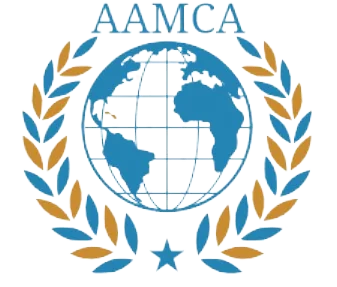Overview of Opium Cultivation Trends in Afghanistan
Afghanistan has long been recognized as one of the world’s largest producers of opium poppy. In 2024, the cultivation of opium has seen a significant resurgence, with an alarming increase of 19% when compared to 2023. This rise is notable given the dramatic 95% decrease in cultivation experienced the previous year, primarily owing to strict government bans aimed at curbing the illegal drug trade. The 2024 figures indicate a complex and evolving landscape that reflects not only agricultural practices but also socio-political dynamics.
Current estimates suggest that the area under opium cultivation has expanded substantially this year, counterbalancing the substantial reductions noted in 2023. The resurgence of these cultivation practices raises questions about the effectiveness of government policies and the socio-economic factors driving farmers to revert to opium production. In 2022, the landscape was vastly different, with cultivation at comparatively lower levels, indicating a disturbing trend that could have long-term implications for both local communities and international drug control efforts.
The increase in opium cultivation also poses significant challenges for governance and law enforcement within Afghanistan. It highlights the ongoing tension between the need for economic development and the imperative of establishing a legal and stable agricultural framework. Moreover, the persistent demand for opium on the global market exacerbates the situation, as farmers may find it more lucrative to engage in poppy cultivation rather than pursue alternative crops. Thus, the fluctuations in opium cultivation not only reflect changes in policy but also broader socio-economic conditions navigating the delicate balance between subsistence and legality.
The Shift in Geographic Cultivation Patterns
The recent geographic shift in opium cultivation in Afghanistan from the traditional southwestern provinces to the northeastern regions has become a pressing concern for both local and international stakeholders. Historically, provinces such as Helmand and Kandahar dominated opium production, contributing significantly to the country’s economy. However, emerging trends indicate that as of 2024, cultivation patterns are altering, with a notable percentage increase in the northeastern provinces like Badakhshan and Takhar.
Statistics reveal a staggering shift, with reports suggesting that opium cultivation in the northeastern region has surged by nearly 30% over the past year. Several factors contribute to this migration of cultivation sites. Foremost among these is the changing political landscape and increased enforcement in traditional areas that have led many farmers to move to regions perceived as less vulnerable to law enforcement. Moreover, climatic factors, including soil fertility and irrigation availability, have made northeastern provinces more attractive for opium poppy cultivation.
This geographical transition has profound implications for local economies. In areas where opium cultivation has become more prevalent, farmers find themselves more dependent on the opium trade, increasing their vulnerability to fluctuations in prices and the ongoing impacts of international drug control efforts. Consequently, local economies that were once diversified are becoming increasingly reliant on this singular cash crop, exacerbating poverty and limiting development opportunities.
Additionally, these shifts in cultivation patterns significantly impact drug trafficking networks. The movement of production to the northeast complicates existing trafficking routes, as new pathways emerge, thereby altering the dynamics of both local and global heroin markets. As regions adapt to these changes, it is crucial to monitor the long-term ramifications on both Afghan society and international drug enforcement strategies.
Economic Implications for Afghan Farmers
The resurgence of opium cultivation in Afghanistan has significant economic implications for local farmers navigating the challenges presented by existing government bans. Amidst this backdrop, the stabilization and recent increase in opium prices have attracted a considerable number of farmers back to this lucrative crop. The price per kilogram of opium has risen sharply since the implementation of the ban, making it a tempting option for rural communities facing economic hardships. This phenomenon underscores the stark reality many farmers face as they prioritize their immediate financial needs above compliance with regulations.
Afghan farmers, often reliant on agriculture for their livelihoods, have increasingly turned to opium poppy as a viable means of sustenance. The volatility of legal crop markets, coupled with inflation and lack of access to essential resources, leads to a growing dependency on the opium economy, which provides a quick return on investment. Unfortunately, this reliance perpetuates a cycle where farmers must grapple not only with the legal ramifications of their choices but also the pressing financial pressures that force them to break the law. This creates a paradox, wherein many farmers feel compelled to engage in illicit activities to ensure their family’s survival.
The urgent need for alternative livelihood options cannot be overstated. While the Afghan government and international agencies have expressed intentions to promote the cultivation of legitimate crops, such as wheat or fruits, the lack of infrastructure and support services often hampers these initiatives. Without sustainable alternatives that provide comparable economic benefits, farmers are caught in a predicament where they must choose between adhering to the ban on opium cultivation and securing their economic well-being. Thus, strategic efforts focused on developing comprehensive support systems are essential for paving the way towards a more stable agricultural economy in Afghanistan.
International Response and Support Strategies
The alarming increase in opium cultivation in Afghanistan has garnered significant attention from international bodies, particularly the United Nations Office on Drugs and Crime (UNODC), which calls for a concerted response to address the underlying issues driving this trend. As Afghanistan grapples with a deteriorating humanitarian and financial situation, international support strategies are critical to ensuring a viable transition for farmers reliant on opium production. Such initiatives must prioritize sustainable income sources, enabling farmers to shift away from illicit crop cultivation.
The UNODC emphasizes the necessity of providing Afghan farmers with alternative livelihoods. This can be achieved through various strategies, such as promoting the cultivation of high-value legal crops, offering vocational training, and improving access to markets. By investing in agricultural development and providing technical assistance, international partners can facilitate a stable economic environment that diminishes the allure of opium farming. Moreover, enhancing infrastructure, such as transportation networks and irrigation systems, can significantly improve agricultural productivity beyond opium.
Furthermore, the role of international aid in this context cannot be overstated. Aid programs focusing on immediate humanitarian relief can provide essential support to Afghan populations suffering from food insecurity and economic instability. However, long-term development assistance is crucial to ensuring sustainable progress. This includes financial incentives for farmers transitioning away from opium, social safety nets, and increased access to education and healthcare. Such multifaceted support is essential for fostering resilience within communities that have depended on opium for their livelihoods.
Strategically, coordinated efforts between nations, NGOs, and local governance are required to facilitate a smooth transition away from opium cultivation. It is imperative that international stakeholders adopt a unified approach, acknowledging the complex factors surrounding opium production and addressing the socio-economic challenges head-on. In summary, a comprehensive and well-supported international response is vital to mitigating the risks associated with opium cultivation while supporting Afghan farmers and enhancing their quality of life.




